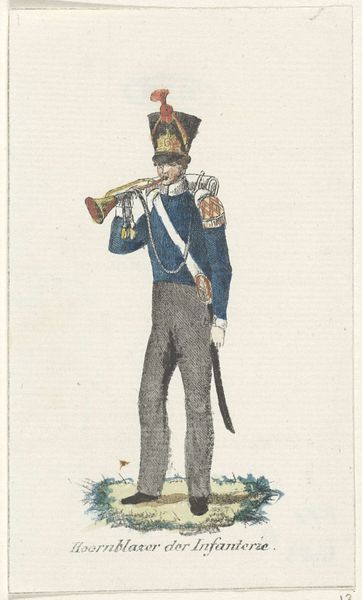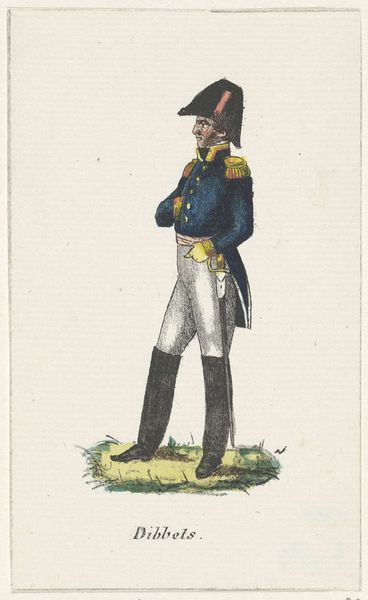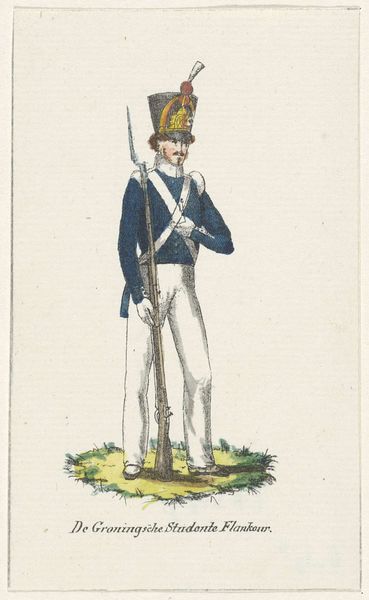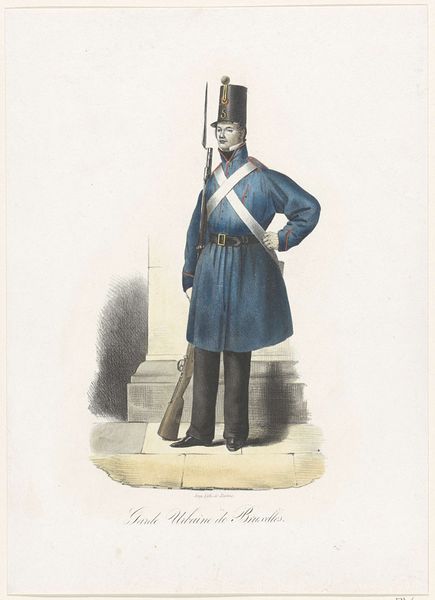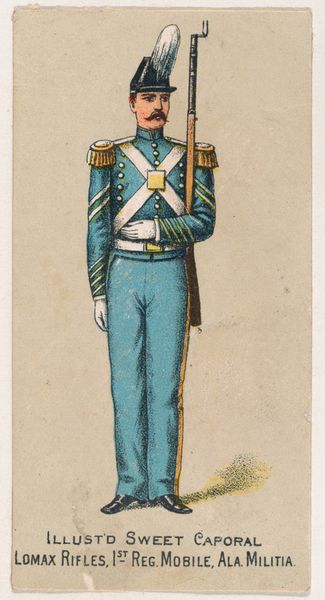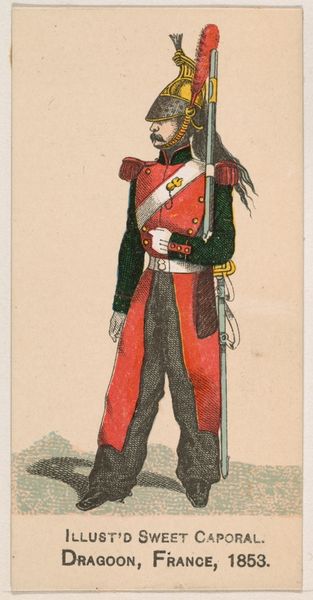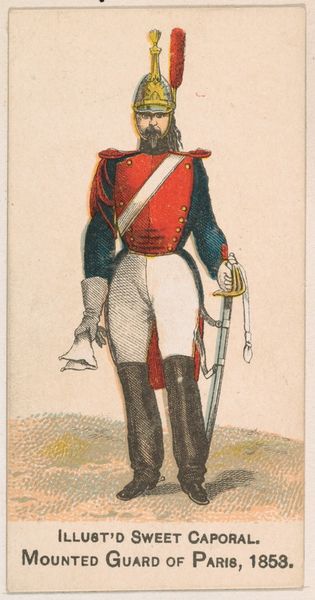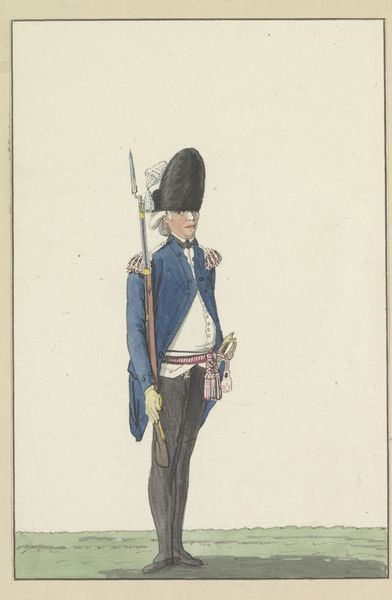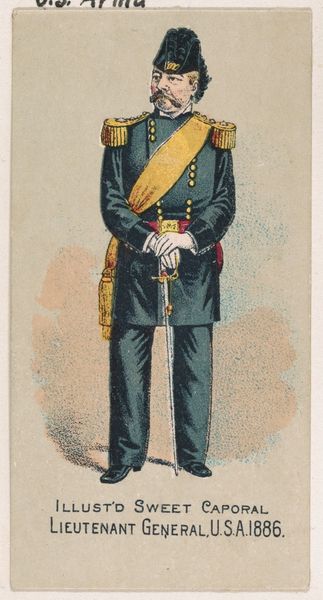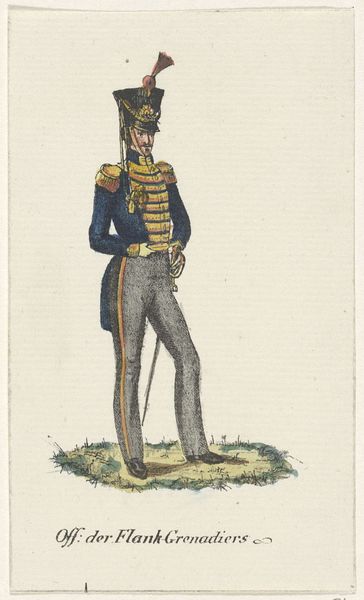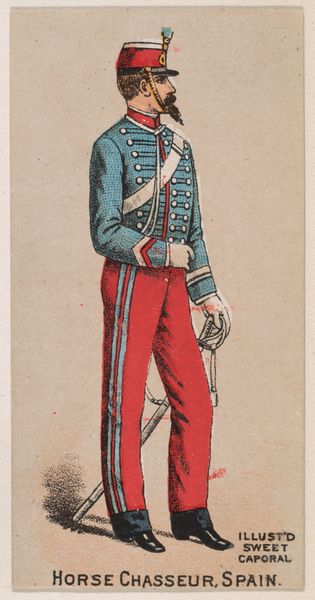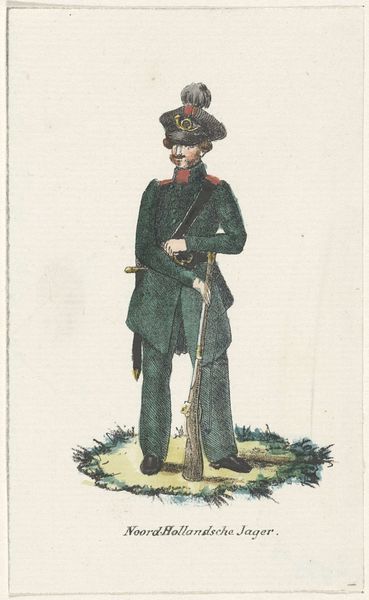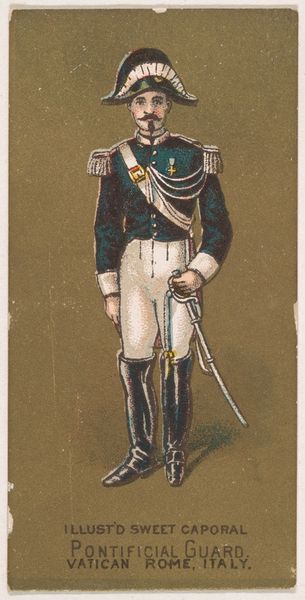
drawing, print, etching, paper, ink
#
portrait
#
drawing
# print
#
etching
#
figuration
#
paper
#
ink
#
costume
#
sketchbook drawing
#
watercolour illustration
#
genre-painting
#
history-painting
Dimensions: height 113 mm, width 68 mm
Copyright: Rijks Museum: Open Domain
Curator: The figure almost appears to float—a stillness reminiscent of those poised moments just before conflict. There's something haunting in its precision. Editor: Precisely, a kind of tension pervades the print of this “Fusilier” by Willem Charles Magnenat, created somewhere between 1830 and 1835. Look at the slight upturn to the corners of his mouth, almost ironic. Curator: The figure strikes me more as an archetype. Notice the uniform – it's less about depicting a particular person than evoking a general sense of military presence. Editor: I see him within the landscape of revolutionary shifts sweeping across Europe. Military uniforms and symbols become sites where narratives of power, nationhood, and masculine identity converge, even solidify in ways we understand now. The print captures an era when military identity became so intertwined with civic and personal identities. Curator: The colour is also important. The blue jacket evokes authority. I see that complemented by the neutral trousers and how those colours interplay with the sharp white lines across the chest that gives a symbolic rigidity and formality to the figure’s silhouette. Editor: Definitely, colour conveys visual language and suggests something about social hierarchy during that period. Curator: But, ultimately, is the man an individual or merely a symbol representing the collective? Are we supposed to see every person reduced to these images? Editor: Precisely. Looking at the construction of identity here also means addressing those left out of this singular vision. After all, that era was a period of increasing militarization where the role of a soldier would eventually affect social roles as a whole, for citizens of the time and beyond. The print inadvertently acts as a reflection of the larger power structures operating during that time. Curator: What’s interesting for me is the interplay between what is included, in terms of what the uniform visually conveys about class, hierarchy, discipline, and strength and also how that contrasts with the quiet, seemingly powerless effect of this figure frozen and suspended on the page. Editor: Yes. Magnenat’s print really encapsulates a time ripe with ideological fervor—militarization meant power, sure, but also subjugation for those deemed 'unfit' to serve. An image, on the one hand seemingly benign, becomes imbued with cultural context.
Comments
No comments
Be the first to comment and join the conversation on the ultimate creative platform.
